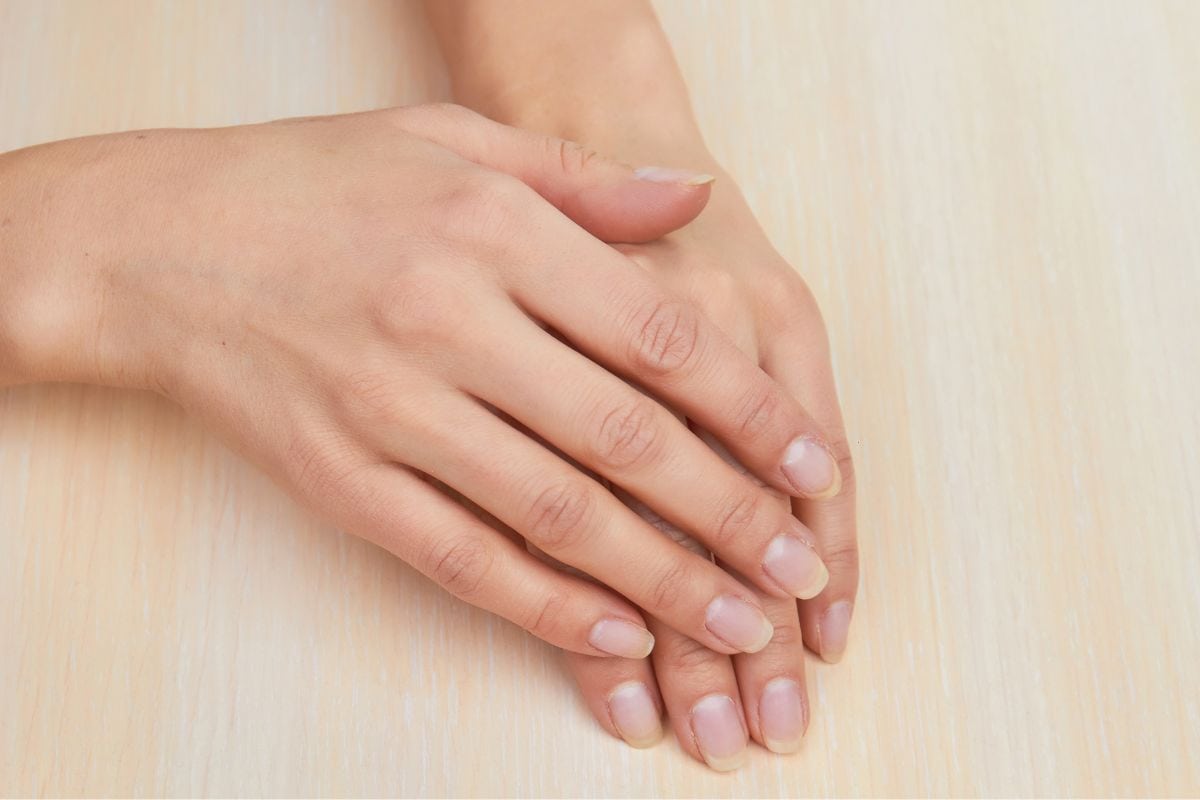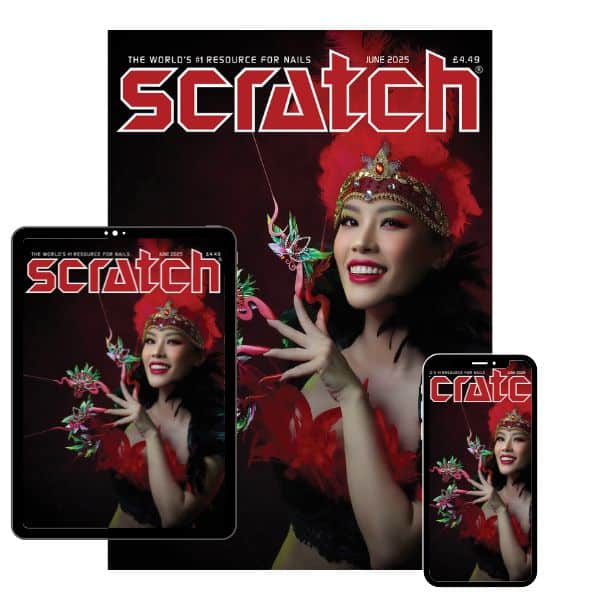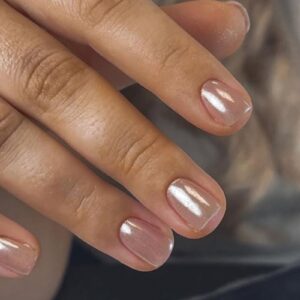
What’s the difference between the nail plate & the nail bed?
By Katie Barnes | 26 April 2024 | Expert Advice, Feature

The terminology can be confusing, but it’s crucial to understand the different parts of the nail structure, including the nail plate and the nail bed.
In this post, I explore the distinct characteristics of these two components and their roles.
THE NAIL PLATE: what you need to know
The nail plate is what we class as ‘a nail’. It has a densely packed surface, made of keratin. Several layers of dead, compacted cells cause the nail to be strong but flexible. These cells are not live – they are keratinised.
The pink appearance of the nail comes from the blood vessels underneath the nail; the nail plate itself is translucent. The underneath surface of the nail plate has grooves along the length of the nail that help anchor it to the nail bed and keep the nail growing in the correct direction. The purpose of the nail plate is to protect the living nail bed underneath, and this is what we work on when doing nails.
Key characteristics of the nail plate:
- Hard and translucent in appearance.
- Prone to chipping, splitting and discolouration when not properly cared for.
- Grows continuously, with its growth rate varying among individuals.
- Subject to external influences such as trauma and improper nail practices.

THE NAIL BED: a closer look
The nail bed is located under the nail plate. It starts at the base of the nail (matrix) and extends through to the free edge. Like all skin, it is made up of dermis and epidermis. The nail bed contains thousands of blood vessels that carry food, oxygen and nutrients to the fingernail. It is important to protect the nail bed when working on the nail plate.
Key characteristics of the nail bed:
- Pinkish in colour due to the presence of blood vessels.
- Attached to the nail plate by microscopic ridges and grooves.
- Responsible for the production of new nail cells, which gradually push older cells toward the fingertips, resulting in visible nail growth.
- Susceptible to damage and infection if not properly cared for.
Understanding the distinction
While the nail plate and nail bed are distinct elements of the nail anatomy, they work together to support the overall function and appearance of the nails. Proper maintenance and care of both the nail plate and nail bed are essential for healthy, strong and aesthetically pleasing nails.
Effective nailcare practices
To maintain the health and beauty of nails, it’s important to implement proper nailcare practices, including the following:
- Gentle prep and filing of the nail plate.
- Moisturising and applying cuticle oil, protecting the nail and surrounding skin.
- Providing clients with proper aftercare instructions.
- Using professional, high-quality nailcare products and techniques.
- Advising your customer to seek professional medical advice for any nail or skin disorders affecting the nail unit.
By understanding the difference between the nail plate and the nail bed, you can offer your clients safe and beautiful nail services.
Love Katie B x

Read the latest issue








